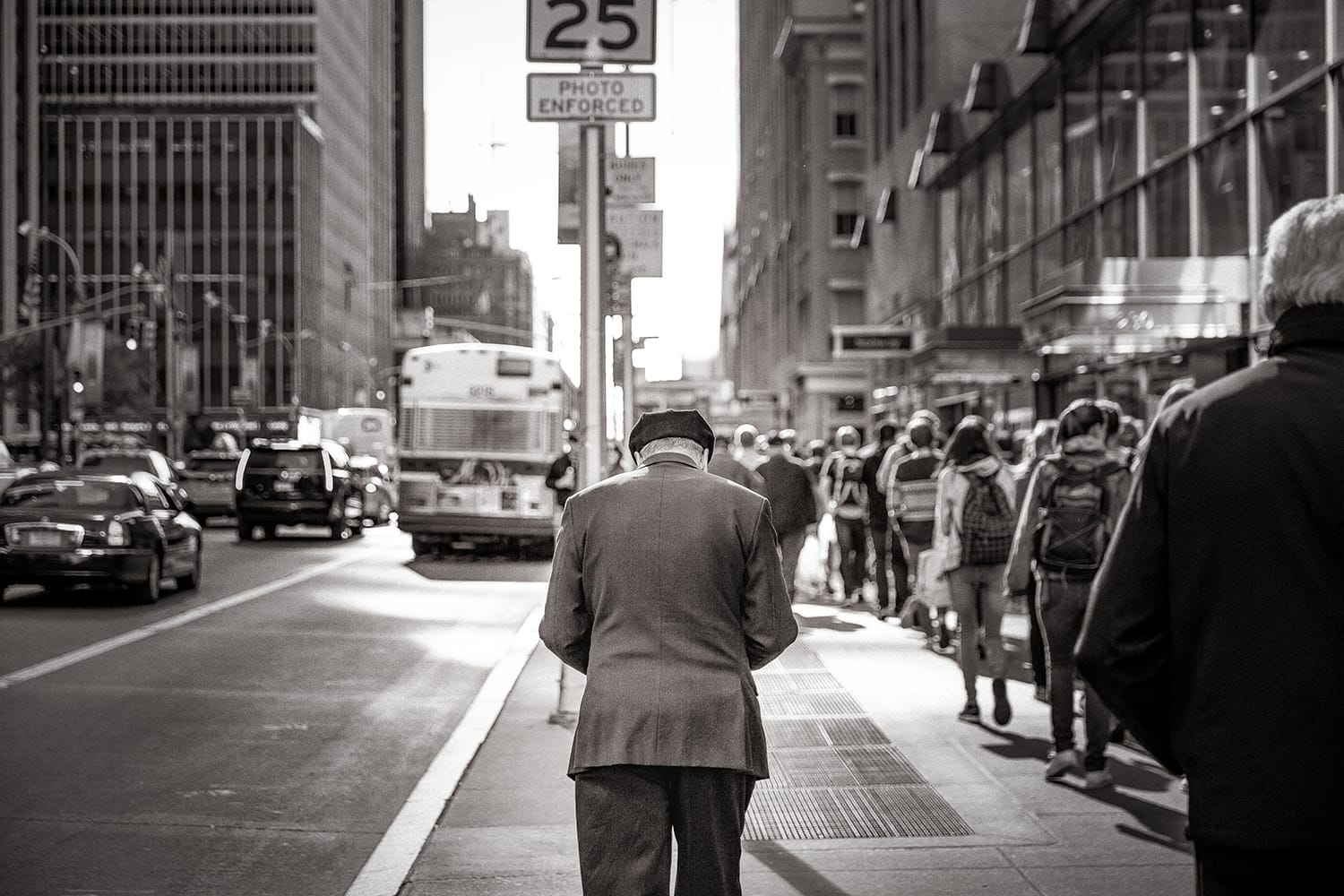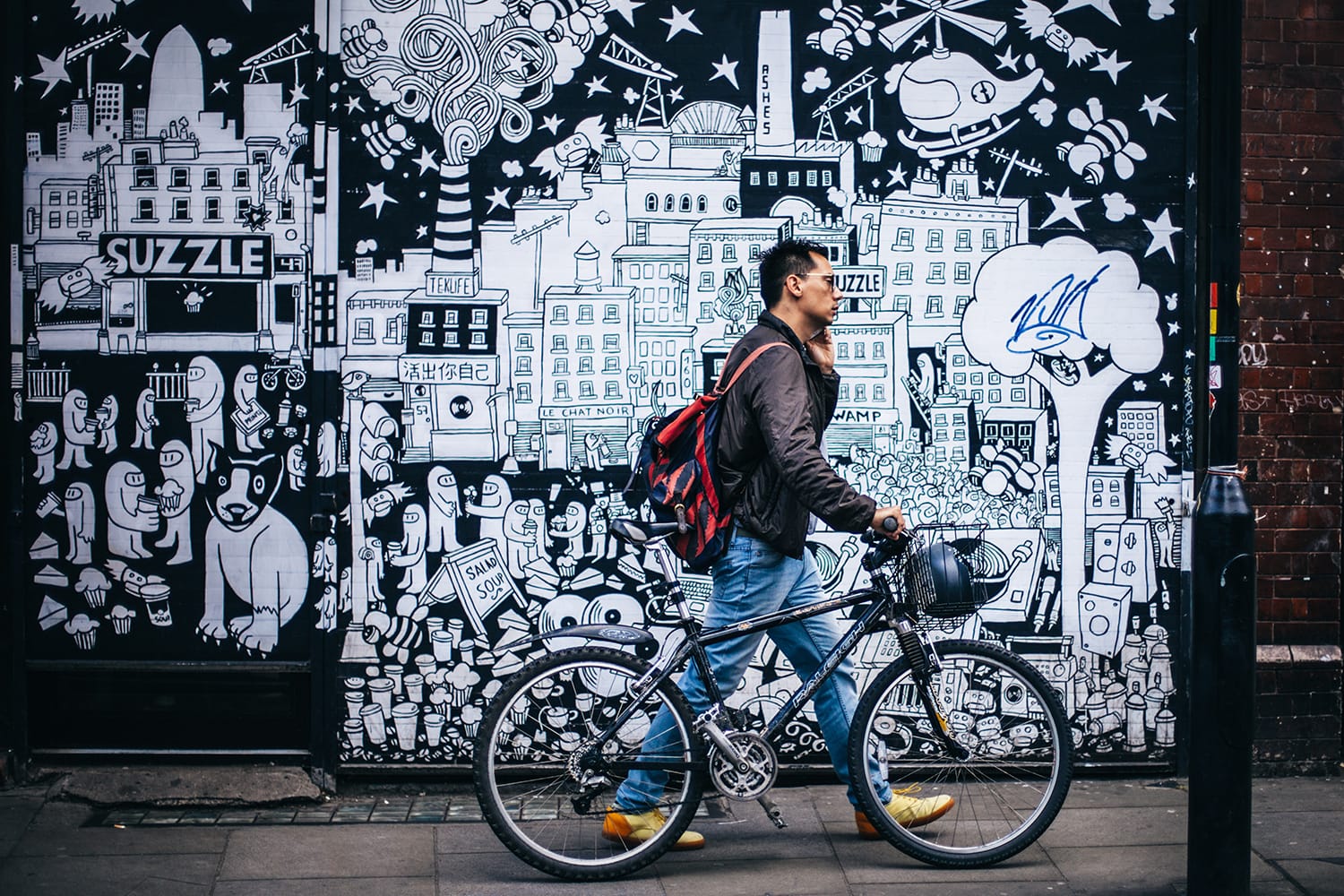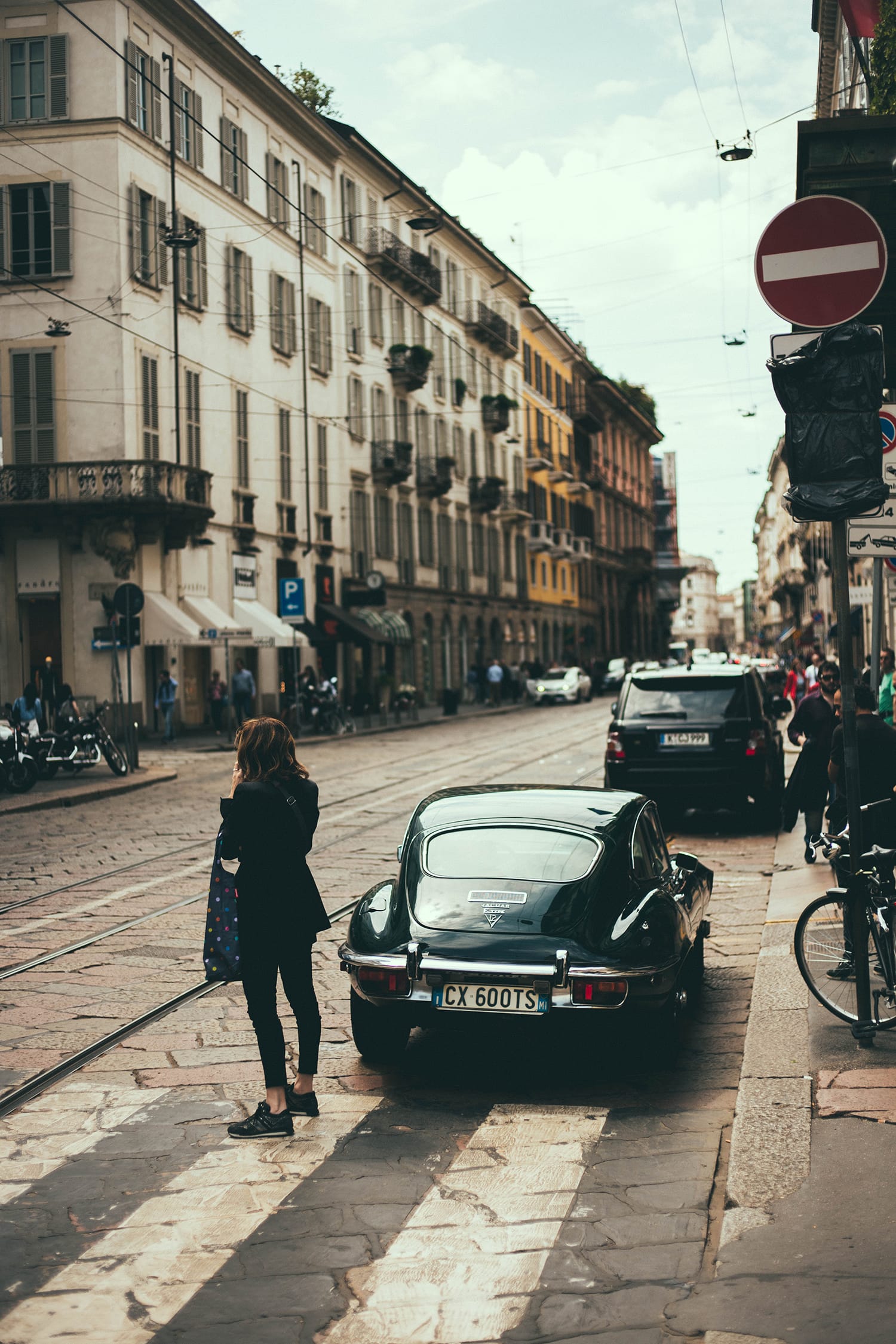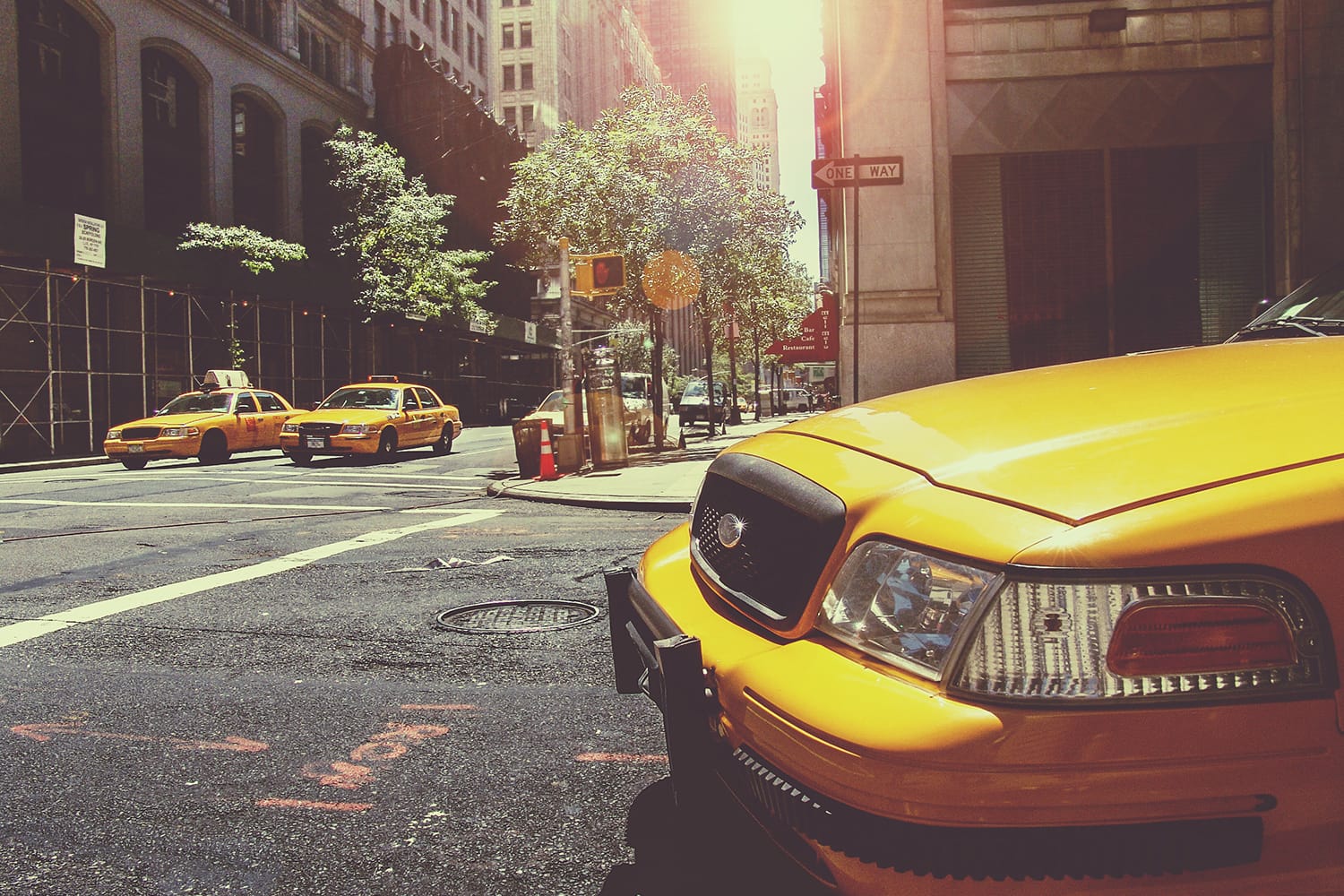Street photography is more than just walking in the streets and taking photos of interesting subjects you see or encounter. It is about people and their lives. You capture moments showing people in their natural, day-to-day environment.
Parents sending off their children to school, a vendor selling his stuff on the street, and a policeman helping an elderly cross a busy street; these are just some examples of images you could come up with in street photography.

If there’s one thing that street photography is about, it’s hard work and determination. If you go out to take photos just so you can add new images to your collection – or just because someone told you to do so – you won‘t really achieve anything worthwhile. Street photography requires you to work hard. It’s not easy finding good scenes to shoot. You have to have extra strong determination so you won’t give up after just 30 minutes or an hour of going around a place or location.
Street photography is also about being patient and brave. You can’t tell someone – “Hurry up and finish the laundry so I can take a good photo of you hanging clothes!”; you need to see how the scene unfolds. You need to learn how to wait. There are also times when you’ll need to approach people – individuals you do not know – and ask permission [1] from them before you take photos.
One other thing that makes street photography quite difficult and challenging is the fact that a lot of critics and even industry insiders focus more on the issue of staged scenes – or staging scenes to get the desired effect.

Of course, not all street photographers stage scenes, but some people like to generalize. Some say it is unfair to those who work hard just to make sure they get an image that’s as authentic and close to the real thing as possible. But there are also some who believe that staged street photography is all right.
Understanding Staged Street Photography
Stage street photography, described in the simplest way, is one where the scene is “choreographed”. There are two ways a photographer can describe a “staged” scene:
- The first one is a manipulated or edited image, and
- the second one is a scene that was “acted out” or set up according to a visualized image. There are some who even hire actors to interpret the scene.
However, another way of staging a street photography scene is when a photographer talks to the subject (such as when asking permission) and they “pose” for the photographer. For example, you see two people, maybe a couple, walking hand-in-hand. You approach and ask them to pose for you in a certain way. Some would even go the extra mile by demonstrating how the couple should be positioned and what their facial expressions should be like. It’s like directing a scene that will interpret your vision.

The reaction to staged street photography varies, really. There are those who are saying there’s nothing wrong with it, and there are those who do not like how “manipulated” they feel upon learning that a street photo was set up. Let’s explore both sides.
Staged Street Photography is Not Okay
For street photographers who are against staged scenes, the number one issue is transparency and honesty. Most of them are all right with photographers who openly admit that they staged or set up their scenes. The story becomes different when they fail to inform viewers that their images were not taken candidly. Many photographers feel that this is disrespecting the audience.
In addition, there are also those who believe that staging a scene somehow disregards the creative process and is a lack of respect especially to photographers who patiently wait until they find the perfect subject or until a story starts to unfold. They wait for the sun to set before taking a photo of a young girl walking home with her dog. They wait for a child to look into her mother’s eyes and smile. They wait until an old lady crossing a busy street holds on to the policeman assisting her.

There are even photographers who go people-watching just so they can capture good images and emotions. But they do not stage or set up the scene; they just prepare their camera and shoot when their intended subject – or when the right subject comes along.
For some, the creative process is lost once a street photographer starts “directing” subjects and “arranging” a scene. It is not genuine or real anymore. Most of the time, it loses its meaning and emotional connection with the viewers.
For some photographers, since street photography captures life “candidly”, staged scenes should be a no-no. When the scene is staged, there is no magical moment anymore.
Staged Street Photography is Okay
Photographers who embrace the concept or practice of staged street photography believed that even if the scenes were manipulated or set up, there’s still a need for the photographer to identify or acknowledged interesting scenes in the streets or wherever the location may be. For them, a photographer does not become less credible just because the shot was staged.

There are times when, even in street photography, a photographer needs to interact with the subject. Whether it is to ask permission or to find out what’s happening, it is not a bad thing to do. In fact, this can help them determine whether the subject is a good one or not.
In addition, just because a photographer sets up a scene doesn’t mean there’s no magic there anymore. Coming up with a concept, visualizing a scene, looking for the right location, and finding people who can interpret requires a lot of skills and hard work. Staging a scene and photographing the way you visualized it is still art – and it still requires a lot of talent, photography knowledge, and passion.
Conclusion
Despite the fact that a lot of street photographers are against it, and many are confused and in hot debate over it, there will still be photographers who’ll continue staging scenes and shots. There will still be those who will not acknowledge that their shots were set up. Why would they, when all they’ll get are judgmental comments? Why would they, when they’ll only be called frauds? When their works will only be continually speculated upon?
The best thing for photographers to do is embrace – not necessarily do or practice it – the fact that staged street photography [2] is an actual thing that many practice.